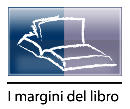 |
10, 2016 | |||
| Abstracts | versione italiana | |

| Saggio |
Maria Antonietta Terzoli - Vincenzo Vitale
Lucia Rizzo - Patrizia Cucolo - Elisa Desirée Manetti - Cristina Taddei
Scienziati e letterati: quattro dediche ottocentesche dal seminario di 'Margini'
This year’s 10th anniversary of the magazine gives the opportunity to open this issue with a special article − special because of its come into being and its authors. The article was conceived in a didactic context related to research, namely the Seminar Nuove tecnologie e ricerca letteraria: le dediche dei libri a stampa (‘New technologies and literary research: the dedications of printed books’) taught by Maria Antonietta Terzoli and Vincenzo Vitale. Since many years, this Seminar takes place at the University of Basel, studying a different century each time following a progressive variation. The Fall Semester 2015 was dedicated to the 18th century, where the analysed dedications − prefaces to scientific and literary works in either Italian or an Italian dialect − are from.
1. In this short essay I will present the dedication of the Indagine fisica sui colori (1801), written by Giovanni Battista Venturi and offered to the poetess Diodata Saluzzo-Roero. The purpose of the present paper is to introduce the author Venturi and his book, the poetess Saluzzo-Roero to whom this work is dedicated and the peritexts. I will particularly focus on the dedication, which is the main object of this study. The topoi of the latter will be analysed, as well as its intertextual references.
2. Bendetto Varchi’s Ercolano has been published for the first time in Florence in 1570 (after the author’s death) by Filippo Giunti and his brothers. Because of its huge success, a second edition of the book has been published again that same year in Venice; Agostino Ferentilli also cooperated as editor.
Despite being disorderly and full of digression (because the author never had the chance to completely work on it), Varchi’s Ercolano is considered as one of the most important works on linguistics of the XVI century. The essay analyses the dedication found in a republication of the Ercolano and underlines the importance of some essential topoi and references included in the text itself.
3. The dedication of the Orlando Furioso’s translation into Bolognese dialect provides some interesting features to analyse. One of the most striking facts is that the first, two encomiastic octaves dedicated to Ippolito d’Este (I iii-iv) have been replaced by some remarks the author (Eraclito Manfredi) made about his translation and the contemporary poets. The book remains unknown for more than a century. Only in 1865 the editor (Ferdinando Guidicini) decides to bring it back to light, and with a dedicatory letter designates Carlo Pepoli as its dedicatee and protector.
4. Paolo Mantegazza’s Igiene dell'amore is one of the first Italian manuals on love and sexuality. The dedication has been offered to Dr. Luigi Billi for the opening of the new Ospedale della Maternità (Maternity Hospital) in Florence.
| versione italiana |
| Saggio |
Marcello Ciccuto
Il bello del Parini, ovvero le armonie del gusto nelle pitture verbali del Settecento
By this essay I’m trying to show how as in the text of Soggetti per artisti and Appunti per pitture decorative as in some other sections of his own literary experience, Giuseppe Parini is going to develop a representative technique which from data of decorative virtuosity and formal classicism tends to approach more regular principles of exctitude, simplicity and purity. These were the grounding items for an idea of Beauty where civil tensions rule, while they are intended to finally co-ordinate old and isolated fragments of beauty within an ideal picture of reason and fairness that succeed in feeding life of the modern subject in a key of universal and harmonious communication.
| versione italiana |
| Saggio |
Francesca Mattei
Le dediche del trattato di Sebastiano Serlio. Divagazione e problemi aperti
The essay examins the content of the dedications published in the several volumes of the architectural treatises by Sebastiano Serlio. The first book was published in Venice (1537), whereas the last was printed posthumously in Frankfurt (1570). The paper aims to use the Serlio’s dedications to add new information to the biography of the architect, that is still a grey area. The text compares the data revealed from the documents to the ones deduced from the dedications, in order to build a catalogue of figures, patrons and other artists met by Serlio and to situate the treatise in the Renaissance context.
| versione italiana |
| Saggio |
Francesca Salatin
Dedica d'architettura, architettura della dedica. Il 'Vitruvio' di Fra Giocondo
The aim of this paper is to consider the dedication to Pope Julius II of the first illustrated edition of Vitruvius, curated by the Humanist Scholar Fra Giocondo da Verona. Dedication analysis can take various paths: on the one hand it points out the reasons why Giocondo’s edition constitutes a turning point in Vitruvian studies, on the other, it raises issues concerning the choice of dedicatee, in the light of policy context.
| versione italiana |
